The Strange Case of Arthur Conan Doyle
Arthur Conan Doyle is world famous for his consulting detective Sherlock Holmes. With the possible exception of Dracula, Holmes is the best remembered character form Victorian literature. The mighty sluth is a paradigm of logic and observation. He is the antithesis of anything supernatural and occult. He himself so famously once said. “This agency stands flat-footed upon the ground, and there it must remain. The world is big enough for us. No ghosts need apply.” Mr. Holmes materialistic world view is even more interesting considering his creator was an unabashed spiritualist.
Doyle’s life is fraught with controversy. Even his last name is in dispute. I am going to refer to him as Doyle. That is the last name on his baptismal record and the name he was knighted under. Though many think Conan was not his middle name but that he had a compound last name, Conan-Doyle. His second wife did sign her name Jill Conan Doyle, but most people accept his last name was just Doyle.
Holmes debuts in The Study in Scarlet, in 1886. He became an instant phenomena. The good detective only appears in four novels and fifty-six short stories by Doyle but I doubt you can find anyone more influential in literature. Holmes trademark characteristic is rationality and logic. Which conflicts with Doyle’s own beliefs that can safely be called naive.
Now don’t think I am bad mouthing Doyle. I love the dude as a human and a writer, recently I had a chance to see the first pages of handwritten manuscript for Hound of the Baskervilles and the feelings that came over me were near spiritual. As a want to be writer, I can say creating a character, an interesting and intriguing character that doesn’t’ share your own world view and core values, is difficult. And that goes doubly so when your creations views are complete opposite of yours.
Part of the lack of a paranormal inclination in the detective I think can be traced to Holmes date of origin which I have said was 1886. Doyle didn’t become a hard core spiritualist until around the end of The First World War. At that time death seemed to surrounded him. His first wife died in 1906, his son Kingsley died in 1918. During that time frame were millions killed in the Great War, many of Doyle’s close friends and relatives also died. It was perhaps not only normal but also cathartic that he turned to a belief in life after death.
It is well known that Doyle wasn’t Holmes favorite fan. Not only did he try to kill him off, he tried to retire him in the end. Doyle felt that Holmes despite being a cash cow took away from his true legacy historical romances. Sometimes I wonder if part of Doyle’s dispute with his creation was a fundamental difference in the belief of the occult.
It wasn’t like there wasn’t a market during the Pre-Edwardian age for occult detective stories. There were hundreds of them. The most well-known now a days is William Hope Hodgson’s Carnaki the Ghost Finder. Well I guess you could argue Abraham van Hellsing is the most famous, but he is more a scientist than a detective. Some of these super natural sleuths even pre-date Holmes, such as Sheridan Le Fanu’s Dr. Martin Hesselius. The trope of an occult detective went from the Victorian age, with explorer and Doyle’s friend Hesketh Hesketh-Prichard’s (Writing under the name E & H Herron) Flaxman Low, then continued through the pulps with Sax Rohmer’s “dream detective” Morris Klaw and Seaburry Quinn’s Jules de Grandin to today’s crop of occult investigators, such as Harry Dresden, Anita Blake, and Odd Thomas.
But if Holmes had been an occult detective I think he would be as obscure now as Flaxman Low is. Not that there isn’t occult elements in his stories, it is just in the end they have a prosaic answer. The most famous the hound of the Baskervilles, turns out to be a normal dog covered with phosphorus. Sometimes I think Doyle pulls a sly one on us, and sneaks in a bit of the occult. Watson often mentions that there were cases that Holmes could not solve or whose solution was to incredible to reveal at this time. There are sixty-one cases that Watson mention but never explores such as James Phillimore who went back to his house for his umbrella and is never seen again. Or the Cutter Alicia that sailed in to a mist and vanished.
I think that the Phillimore case might be inspired by the Victorian era belief that people could be abducted by ferries. Doyle was the biggest and most famous proponent of the Cottingly Fairies. This was a series of six pictures by two school girls of themselves with fairies. Kind of an early fae selfie. I know no one who looks at those pictures now and doesn’t say it is a photo of a girl surrounded with paper cutouts. In fact it is hard to believe anybody at the time took them seriously. But Doyle and many others really felt they were proof of a fairy world. Doyle had the photos reproduced in one of his books about the paranormal.
In the book the Edge of the Unknown, Doyle wrote an entire chapter that his friend Harry Houdini was not just a stage magician but had actual magical powers. Houdini who never revealed his tricks is rumored to have even shown Doyle how he did some of his prestidigitation, just get him to back down from his Houdini is magical kick. It got so bad that Houdini ended their friendship because Doyle wouldn’t admit that he was wrong.
As for the Alicia I think that it may have been inspired by the infamous case of the Mary Celeste. Although I am basically a skeptic I love strange mysteries, Fortean events, and paranormal stories. The Mary Celeste is an American ship found a drift at sea without its crew. I couldn’t figure out why in conversation I kept calling the Mary Celeste, the Marie Celeste. It turns out it is all Doyle’s fault.
Two years before revealing his great detective to the world, Doyle wrote a fictional version of the Celeste’s story, called J. Habakuk Jephson’s Statement where he called the crew-less ship the Marie Celeste. Many details that Doyle made up for his fiction such as the lifeboat’s not being missing as well as the wrong name have been included into accounts of the real ship’s disappearance.
Though Holmes, Doyle’s most popular creation, stayed away from the paranormal, his second most famous character Dr. George Challenger didn’t. Challenger, who is most well-known now for the dinosaur epic The Lost World, differed in many ways from Holmes. They were both genius, Challenger was a master of all sciences, but where Holmes was thoughtful almost sullen, Challenger was a strange mixture of id and intellect. He was strong muscular and hairy reminding people of a Neanderthal. His adventures dealt not only with surviving dinosaurs in South America but also the after-life, strange space eithers that put the world in a coma, and mad scientist making teleporters as a weapons. This was a setting that allowed Doyle to explore not only what we would now call science-fiction/fantasy but also the paranormal. Doyle even wrote some monster stories like such as The Parasite, Lot 249, The Horror of the Heights, and the Terror of Blue John gap, that could fit right in with Lovecraft’s Cthulhu circle stories.
Holmes’ world view is opposed to Doyle’s, but the author never ridicules the creation for it, in fact turning it into one of his strengths makes both Holmes and Doyle far more interesting creatures.

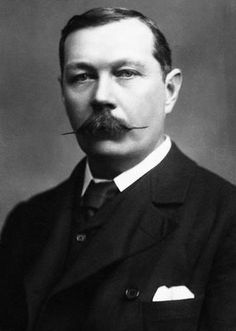
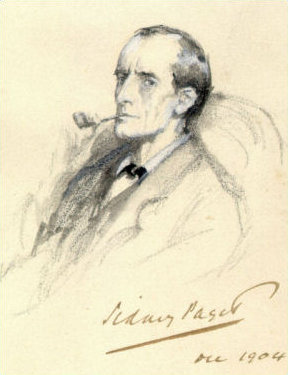
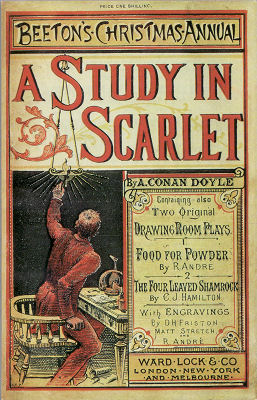
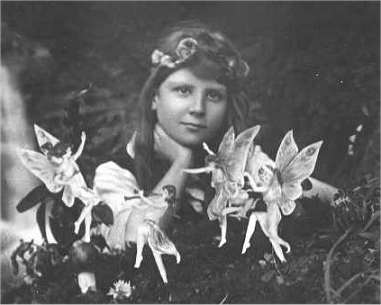
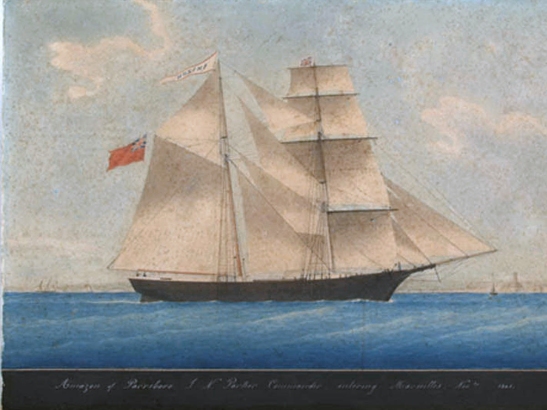
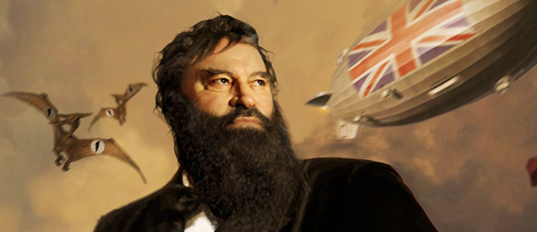
Great post. I find it fascinating that Doyle grew tired of his creation and tried to kill off Holmes. Agatha Christie found herself in a similar situation with her great literary creation, Hercule Poirot. She couldn’t stand him by the end and was delighted to kill him off!
I don’t mean to be overly dramatic about it but it seems to me like you are sort of killing your own children after all the time a writer puts into their creations.
I agree, especially after all those years of writing them. Must feel really weird. But I believe that Christie was glad to see the back of Poirot! Mind you, sometimes people don’t like their own children, so maybe it’s not so bizarre after all…
Hi.
Just thinking that sometimes writers just want to move on. They can’t think of anything more to write and the pressure of writing more about their famous characters is actually starting to stunt the writers’ growth. Needless to say, they outgrow their characters.
that is true.And 30 years is a lot of time to devote to one character no matter how popular
Interesting post and does raise the question why such a spiritual writer would create such a rational character as Holmes. I wonder too if the ‘fairy photos’ fooled people becuse photography was still a relatively new technology. A lot of real photos from the era look unreal. I just finished watching the Jeremy Brett series of Sherlock Holmes and I remember one episode about a vampire in which his views of the supernatural were seriously tested. A fascinating character created by a fascinating author.
Chris
Let me say I love Jeremy Brett as Holmes, he is by far my favorite. I remember that episode to with fondness.
I honestly have wondered if maybe the Victorians honestly wondered if two young girls were incapable of faking the photos. this is something I realy need to do more research on.
Hi Dave,
Thanks so much for the blog likes and the blog follow. It has led me to your blog, which I am now following.
I don’t know much about science fiction and that is why I am really looking forward to reading more of your posts.
Happy blogging! 🙂
Nancy
Another fine appreciation of a writer, good show mate.
Thank you. You know the more I discover about writers, the more I appropriate their work.
Only steal from the best, or the good stuff no one knows about.
🙂
Reblogged this on Loud Alien Noize and commented:
I just loved this post. I thought you would too!!
My grand-mother is British and I spend almost 3 months over there and I so enjoyed reading Sherlcok Holmes adventures and just let myself slip into this British atmosphere that is so comforting to me and takes me back to a huge part of my roots and brings back nothing but good feelings and memories. Thank you so much for that post. I reblogged it and I never done that before… There is a first time for everything isn’t it? So once again Thanks so much….
My pleasure I am glad you enjoyed it.
Here is some very weird Victorian Art…. 😉 Enjoy? http://tobedamit.com/2014/08/10/the-strange-discoveries-of-travis-louie/
Oh I saw that on your blog this morning cool stuff.
TY!! I think we share some common interests. Looking forward to share some more!!! Sincerely. Peace Out!
Oh, here you are. Told you you’ll have lots to talk about 🙂
Wonderful post, Dave!!! I like Doyle and you’ve added lots more info here than I ever knew (well, probably because I’ve never done research, actually). I love mysteries, though I can’t say I’ve had the chance to read lots of them. I am currently into forensics stuff so that should tell you I love mysteries.
The story I’m presently working on, while a fantasy-paranormal one, is also part Sci-Fi and scientific due to forensics stuff I try to include. So although I’m definitely far from being of the same caliber as Doyle’s, I can say that I can relate with him. As writers, a lot of times, we really want to put everything that makes sense to us even if sometimes, it might not make sense to others. I do hope that if I get to finish my story, it will make sense to anyone reading it. *crosses fingers*
Love to read it when you are done. I really feel forensic fantasy is just a huge open field ready for harvesting.
Been posting it but I’m always short when it comes to time. I’m kind of OC as well so I keep reading and re-reading and even editing. It’s a sickness. Ugh.
Did you know that Doyle wrote a book called “The Coming of Fairies”? I came across it a few months ago and put it on my to-read list so I’m not sure what it’s like yet. I also had come across a book called “The Ghost of the Mary Celeste” by Valerie Martin, that I added then as well. When your article mentioned these two subjects something clicked and I went and looked at my list and sure enough, they were on there. I probably won’t get around to reading them any time soon unfortunately but you never know!
Enjoyed your article! I’ve been reading Doyle and Agatha and everything since I was a little kid. I became a forensic anthropologist because I enjoy the science and mystery so much. I’ve got a lot of experience in proof-reading if you ever want someone to check over your work.
Keep it up, you’re a good writer =)
~ Malorie Townsend, the Bone Lady
Thank you for the offer. The more I understand Doyle the man the more I love his work.